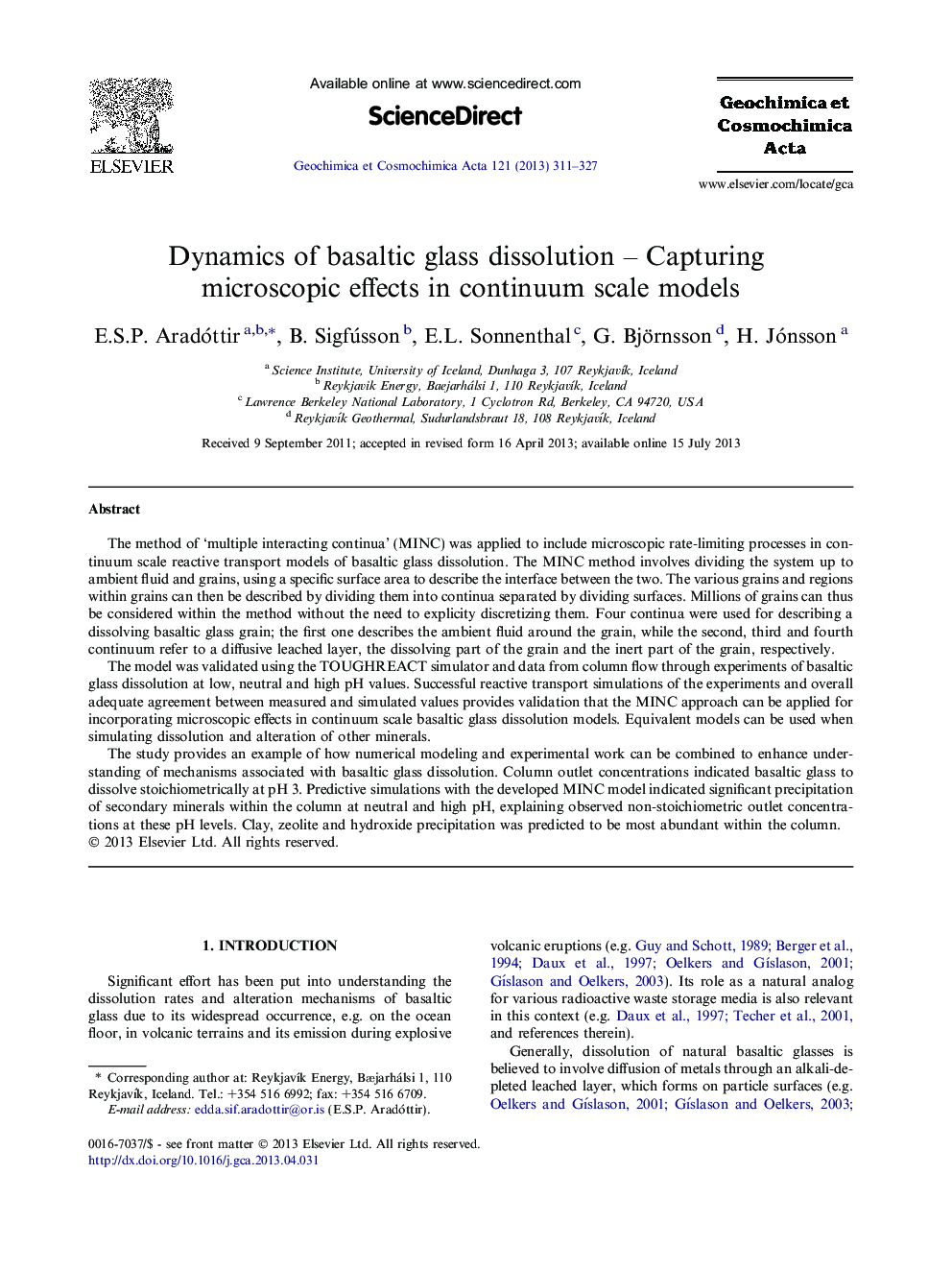| Article ID | Journal | Published Year | Pages | File Type |
|---|---|---|---|---|
| 6438912 | Geochimica et Cosmochimica Acta | 2013 | 17 Pages |
Abstract
The study provides an example of how numerical modeling and experimental work can be combined to enhance understanding of mechanisms associated with basaltic glass dissolution. Column outlet concentrations indicated basaltic glass to dissolve stoichiometrically at pH 3. Predictive simulations with the developed MINC model indicated significant precipitation of secondary minerals within the column at neutral and high pH, explaining observed non-stoichiometric outlet concentrations at these pH levels. Clay, zeolite and hydroxide precipitation was predicted to be most abundant within the column.
Related Topics
Physical Sciences and Engineering
Earth and Planetary Sciences
Geochemistry and Petrology
Authors
E.S.P. Aradóttir, B. Sigfússon, E.L. Sonnenthal, G. Björnsson, H. Jónsson,
